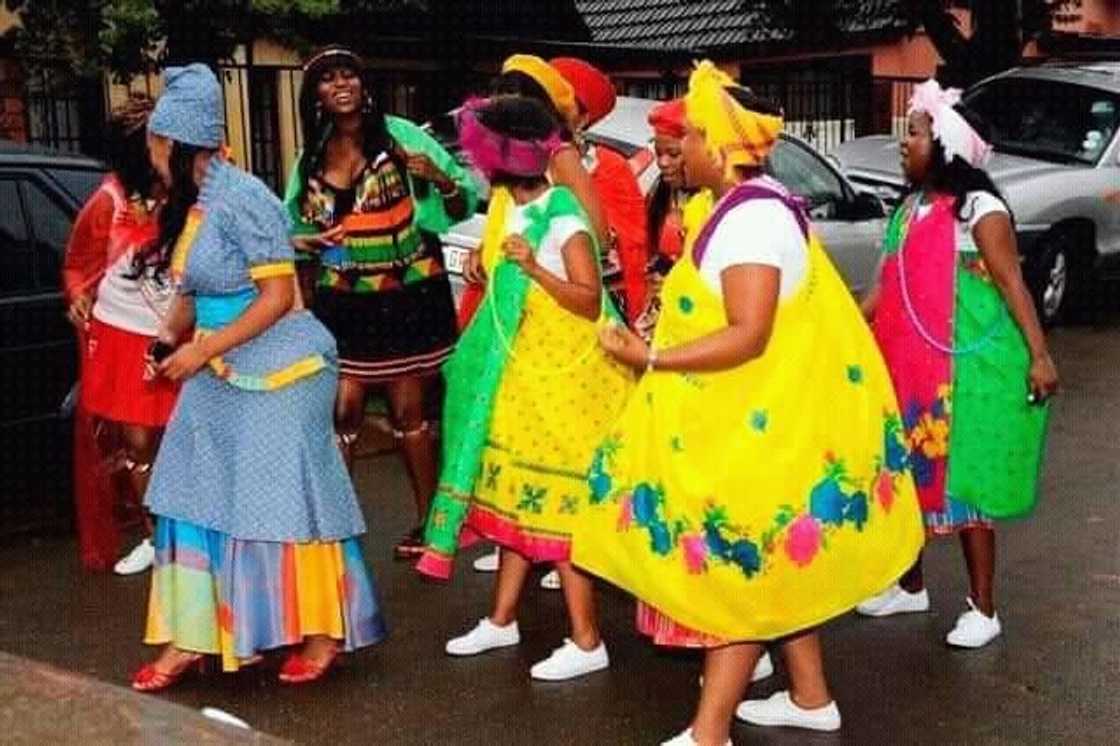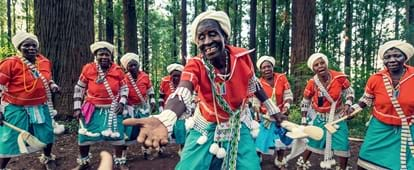The Best Strategy To Use For South African Culture Today
The Best Strategy To Use For South African Culture Today
Blog Article
Some Known Factual Statements About South African Culture Today
Table of ContentsNot known Facts About South African Culture TodayThe Of South African Culture TodaySome Known Incorrect Statements About South African Culture Today The smart Trick of South African Culture Today That Nobody is DiscussingSouth African Culture Today Fundamentals ExplainedSome Known Details About South African Culture Today
This follows with singing and drum beating. The bride-to-be and bridegroom then meet the elders and discuss the value of their union. An issue of value in Zambian villages is the passing away of loved ones. All members of the town placed money, time and initiative together for the burial of the deceased.Music and dancing is an extremely crucial aspect of the Zambian society. The numerous tribal devices have their own dance types; however, makishi is usual amongst all tribes.
The 45-Second Trick For South African Culture Today
When it involves music, drums are utilized one of the most, with a selection of drumming ceremonies. In Zambia, majority of individuals are Christian; Protestant and Roman Catholic. There are little teams of Muslims and Hindus, with the rest following regional indigenous tribal ideas.

South African heritage and culture is exceptionally diverse, and contains many various teams of people who each have their very own practices and beliefs. Having such a diversity of individuals and societies is what makes South Africa so distinct. In the real feeling of the phrase, we are a rainbow nation.
Making it the 7th on the listing of nations with the most Portuguese people in it outside of Portugal. Portuguese is not just a culture, yet it is likewise a language and a nationality. Portuguese people stem from the nation of Portugal in Europe, nevertheless, due to Portugal (like several various other countries in Europe) exploring the world and overcoming various other nations throughout the 15th 20th centuries, South Africa has what we call Portuguese South African's living in it.
What Does South African Culture Today Mean?
Amongst the popular attributes of the topography is a plateau that covers nearly 2 thirds of the center of the nation. The plateau complex increases toward the southeast, where it climaxes in the Drakensberg variety, component of an escarpment that divides the plateau from the seaside areas. The Drakensburg includes Champagne Castle, the highest optimal in the country.
The region north of the Witwatersrand, called the bushveld, inclines downward from eastern to west towards the Limpopo River, which forms the worldwide boundary. The western area of the plateau, the middleveld, also descends towards the west and differs in elevation in between the highveld and bushveld. Between the Drakensburg and the eastern and southerly coast, the land descends to the sea.
Nearer the coastline there is a low-lying level called the eastern lowveld. Southwest of the plateau the country comes to be gradually a lot more dry, paving the way to the stony desert of the Great Karroo, surrounded on the east by the lower, much better watered plateau of the Little Karroo. Dividing the completely dry southerly interior from the sandy coastal of the southern shore and West Cape is an additional variety, the Langeberg.
Little Known Questions About South African Culture Today.
The country's racially, ethnically, and politically divided history has actually created national and subnational signs that still function as signs of the country, and others icons that are approved only by particular teams. The monoliths to white settler occupation and political supremacy, such as the Afrikaner Voortrekker ("leader") Monument in Pretoria and the Rhodes Monument recognizing the British colonial empire contractor and Cape head of state Cecil Rhodes, stay sectarian signs.
The very first contemporary residents were the San ("bushman") hunter-gatherers and the visit the site Khoi ("Hottentot") individuals, that rounded up livestock (South African culture today). The San may have existed for thousands of years and left proof of their visibility in thousands of old cave paintings ("rock art"). Bantu-speaking clans that were the ancestors of the Nguni (today's amaZulu, amaXhosa, amaSwazi, and vaTsonga individuals) and Tswana-Sotho language groups (today's Batswana and Southern and Northern Basotho) migrated below east Africa as very early as the fifteenth century

The 2 previous republics of the Orange Free State and Transvaal (South African Republic) were developed by Afrikaner inhabitants who defeated and dispossessed the Basotho and Batswana. Lesotho would have been by force included right into the Orange Free State without the expansion of British protection in 1869. The utmost unification of the country arised from the South African War (18991902) between the British and both Afrikaner republics, which decreased the nation to wreck at the start of the twentieth century.
Afrikaners traditionally considered themselves the just real South Africans and, while granting full citizenship to all residents of European descent, denied that status to individuals of shade up until the autonomous change of 1994. British South Africans maintain a sense of cultural and social link to Great Britain without damaging their identity as South Africans.
The Of South African Culture Today
The diversity and fragmentation within ethnic groupings and the equilibrium of tensions in between those teams during the twentieth century prevented interethnic civil problem. While intergroup tensions over their explanation resources, privileges, and political supremacy remain, those problems are as likely to match Zulu against Zulu as Zulu against Xhosa or African versus Afrikaner.
From colonial India, British merchants and administrators brought the curved steel ornamental roof coverings and slender lace work pillars that still typify the outdoor patios of cottages in the areas and cities throughout the nation. Residences of praise contribute a crucial architectural facet even in the tiniest communities. In addition to the soaring steeples and timeless stonework of Afrikaans Dutch Reformed churches, Anglican churches, synagogues, mosques, and Hindu temples provide selection to the religious building scene.

Slaughtering and the developing of traditional grain beer are essential in securing the participation and goodwill of the ancestors who are taken into consideration the guardians of good luck, prosperity, and well-being. Indian neighborhoods keep their indigenous culinary practices and use them on Islamic and Hindu ritual and ceremonial celebrations. Afrikaners and Coloured people collect at weekends and unique celebrations at multifamily barbeques called braais, where neighborhood bonds are reinforced.
Since this was the main economic venture of both black Africans and white colonists, dispute in between those groups focused on the property of grazing land and livestock. In 1867, the biggest diamond deposits on the planet were uncovered at Kimberley in the west main location. The wealth from those areas helped finance the exploitation of the best gold coral reef worldwide, which was discovered on the Witwatersrand in 1886.
See This Report on South African Culture Today
This brought about misconceptions and calculated misrepresentation in the transactions of white settlers and federal government officials with African principals throughout the early american duration (South African culture today). In the facility of African gets, some aspects of common and primarily "tribal trust fund" land tenure were maintained, and also in white country areas, forms of public period see page were still exercised in areas with African areas
After the democratic makeover of 1994, programs for land restitution, redistribution, and reform were set up, but development has actually been sluggish. The white minority still manages eighty percent of the land. In the wake of agricultural land invasions in Zimbabwe, the Department of Land Matters has actually pledged to speed up land redistribution.
Report this page